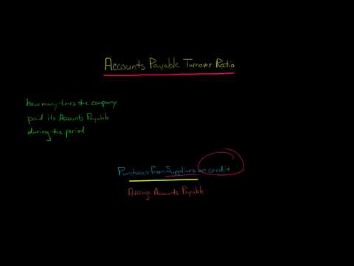News & Notice
공지사항
| 제목 | What Is Selling, General & Administrative Expense SG&A? How to Calculate & Examples | ||
| 작성일 | 2022-05-23 | 작성자 | 정새론 |
SG&A includes the costs of managing the company and the expenses of delivering its products or services. Administrative expenses are essential for companies and investors, as they can impact a company’s profitability and efficiency. Companies with high administrative fees may not operate as efficiently as those with low overhead costs, which can negatively impact their bottom line. On the other hand, companies with low administrative expenses and efficient operations may generate higher profits. In business, Selling, General, and Administrative expenses (SG&A) are critical aspects of operations and financial health. SG&A expenses are incurred in the daily operations of a company, excluding the costs of producing goods or services, and are necessary for the company’s sales and administrative functions.
How to calculate selling general and administrative expenses?
- Operating Income (EBIT) = Gross Profit – SG&A. From here, you can divide EBIT by revenue to calculate the operating margin.
- Operating Margin = EBIT / Revenue.
- SG&A Expense = Gross Profit – Operating Income (EBIT)
- SG&A Ratio = SG&A ÷ Total Revenue.
Marketing, advertising and promotion expenses, including social media costs are a good example of indirect selling expenses. Base salaries of salespeople and travel expenses refer to this category as well, even if they don’t generate income. General and Administrative (G&A) expenses are the day-to-day costs a business must pay to operate, whether or not it manufactures products or generates revenue. Typical G&A expenses include rent, utilities, insurance payments, and wages and salaries for administrative and management staff other than salespeople.
Does SG&A Include Salary?
Whatever the sector that you’re working in and the products or services that you’re responsible for, your selling expenses will probably account for a significant proportion of your SG&A outgoings. This type of expense will typically appear on your income statement, which shows the amount of revenue that your business has generated and the expenses that it’s incurred. Sometimes it’s broken out into a variety of expense line items but, more commonly, in what is known as a Consolidated Statement of Operations, it’s included in just one.
- Some of the best business accounting software solutions also offer free accountant training programs to help you stay up to date on the latest functionalities and take advantage of the software.
- Selling, General & Administrative (SG&A) expenses are the costs a company incurs to promote, sell and deliver its products and services, as well as to manage day-to-day operations.
- It’s important to note that the specific expenses included in SG&A can vary depending on the company and the industry in which it operates.
- You might also be paying management consultants or freelancers – again each of these represents this type of expense.
- Depreciation is typically reported as a separate line item within operating expenses, too.
Understanding and controlling SG&A can help companies manage their overhead, reduce costs and sustain profitability. Indirect selling expenses occur throughout the manufacturing process and after the product is finished. You might encounter a problem when you’re analyzing income statements from two firms in the same industry. This can make the gross profit margin and the operating profit margin appear to differ, even if the firms are financially identical otherwise.
Limitations of Selling, General and Administrative Expenses (SG&A)
The total amount of SG&A for a given period is the sum of all the individual expenses that comprise that category. There are a number of different types of SG&A expenses, but some of the most common ones include salaries and wages, advertising and marketing, office supplies, and rent. A company incurs SG&A expenses in its daily operations, and many of these expenses may be necessary for the company’s sales and administrative functions. It can limit a company’s ability to control its SG&A costs and may limit the impact of cost-saving measures. SG&A expenses only reflect a portion of a company’s operating expenses and do not include the costs of producing goods or services. It means more than the SG&A expenses are needed to provide a complete picture of a company’s financial health.

While rather uncommon in practice, a company’s SG&A expense can be derived by rearranging the first formula. From here, you can divide EBIT by revenue to calculate the operating margin. The screenshot above is taken from CFI’s financial modeling courses, which cover forecasting SG&A expenses. Anastasia is a FinTech writer with experience working as a freelance writer for small business owners.
General & Administrative (G&A) Expense
Individual businesses might have higher or lower SG&A percentages based on their unique cost structures and strategies. Overall, understanding SG&A expenses is an essential aspect of financial management and can help companies to make informed decisions and to achieve financial stability and growth. SG&A expenses are disclosed in the notes to a company’s financial statements, providing additional information and transparency to investors and analysts. By monitoring Sg&a Expense Selling, General & Administrative SG&A expenses, a company can identify areas where costs can be reduced and implement cost-saving measures, improving the company’s profitability and financial performance. Certain companies will file their financial statements with one line for SG&A, while others – for example, software companies – will separately break out G&A and sales & marketing. The SG&A expense is recorded on the income statement of companies in the section below the gross profit line item.
The differential between gross profit and EBIT, assuming there are no other operating expenses, represents the incurred SG&A expense in the given period. When it comes to the difference between SG and operating expenses, often there’s none, especially in the way many companies report them on the income statement. What’s different is the degree of granularity when reporting operating expenses. General expenses are incurred by a company regardless of the industry or products/services it creates.
The following pictures reflect how payment processing fees are changing over time. Packing and shipping costs as well as commissions of salespeople, partners or representatives can be a good example of a general direct selling expenses. When it comes to business selling expenses, they’re often divided into direct and indirect costs. The sales-related costs included in SG&A expenses can vary widely, depending on the nature of the business. For example, a business that relies heavily on direct sales might have high sales commissions and other sales-related expenses. On the other hand, a business that relies more on marketing and advertising might have higher advertising and promotion costs.
- In summary, SG&A expenses are a subset of operating expenses that focus on the costs of daily operations not directly related to producing goods or services.
- By comparing their SG&A expenses to industry averages, companies can assess their competitiveness and identify areas for improvement.
- In accounting, record SG&A expenses as debits to the appropriate expense accounts, such as selling, general, and administrative expenses.
- The classification of expenses as SG&A can be subjective, as some costs may be classified as selling or general and administrative fees.
- There are also a few specific categories that are part of operating expenses but are excluded from SG&A.
SG&A expenses can be a significant expense for a company, and it is important to track them carefully in order to understand how they are impacting the company’s profitability. It’s important to note that the specific expenses included in SG&A can vary depending on the company and the industry in which it operates. However, the goal is to capture all the costs incurred in the company’s daily operations, excluding the direct costs of producing goods or services. General expenses are essential for companies and investors, as they can impact a company’s profitability and efficiency. Companies with high available fees may not operate as efficiently as those with low overhead costs, which can negatively impact their bottom line. Companies with low available prices and efficient operations can generate higher profits.
Remember that the classification of certain costs might depend on the specific context and industry. For instance, research and development (R&D) costs are considered SG&A expenses in most industries. Still, in certain industries, such as pharmaceuticals, these costs might be treated as product costs due to their direct relationship with developing new products. Sometimes, SG&A will be a section, with items broken out in individual lines. If this is the case, then different line items will have differing forecast methods. For example, rent most likely will be a fixed dollar value every period.

Examples of direct selling expenses include transaction costs and commissions paid on a sale. To correctly track expenses and other important financial data, consider purchasing small business accounting software. It expedites and accelerates financial processes while ensuring accuracy and compliance. Some of https://kelleysbookkeeping.com/what-is-cost-of-debt/ the best business accounting software solutions also offer free accountant training programs to help you stay up to date on the latest functionalities and take advantage of the software. Especially as your company grows, tracking expenses can be a time intensive process and prone to error if done manually.
Selling, General, And Administrative Expenses
Our easy-to-use template will help you understand the cash coming in and going out of your business so you can make smarter decisions. It’s also important to distinguish your capital expenditure (CapEx) which is what you invest in acquiring, maintaining and upgrading your buildings, machinery and vehicles. The distinction found in the financials will be based on the relative size of each, which depends on the specific industry in question. For example, the SG&A ratio for manufacturers can range anywhere around 20% of revenue, while in healthcare it can be up to 50% of revenue.
What is general and administrative G&A expenses?
General and administrative expenses are accounting terms that refer to a company's operating expenses that stay the same regardless of sales or production levels. Types of G&A expenses include building expenses, salaries and wages, insurance, licenses and fees and supplies.
